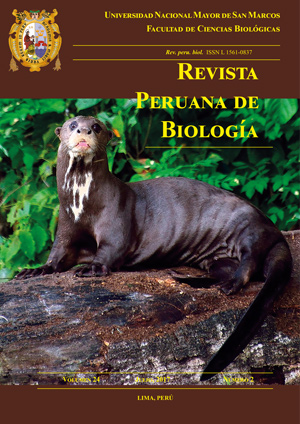First report of Cricocephalus albus (Digenea: Pronocephalidae) from Peru, parasite of the green turtle (Chelonia mydas agassizii)
DOI:
https://doi.org/10.15381/rpb.v24i2.13501Keywords:
Trematoda, Plagiorchiida, Cricocephalus albus, quelonio, Chelonia mydas agassizii, Virrilá.Abstract
Cricocephalus albus (Digenea: Pronocephalidae) is registered for first time in Peru in the East Pacific green turtle (Chelonia mydas agassizii). The parasites were collected during a necropsy carried out in a stranded sea turtle in the Virrilá estuary, located in the Sechura province of Piura, Peru. The specimens were studied morphologically and identified as C. albus. The current work describes C. albus, as well as the discussion of its hosts and geographic distribution.Downloads
Downloads
Published
Issue
Section
License
Copyright (c) 2017 Luis A. Gomez-Puerta, Vanessa Bachmann, Javier Quiñones, Sixto Quispe, David Torres, Joe Macalupu

This work is licensed under a Creative Commons Attribution-NonCommercial-ShareAlike 4.0 International License.
AUTHORS RETAIN THEIR RIGHTS:
a. Authors retain their trade mark rights and patent, and also on any process or procedure described in the article.
b. Authors retain their right to share, copy, distribute, perform and publicly communicate their article (eg, to place their article in an institutional repository or publish it in a book), with an acknowledgment of its initial publication in the Revista Peruana de Biologia.
c. Authors retain theirs right to make a subsequent publication of their work, to use the article or any part thereof (eg a compilation of his papers, lecture notes, thesis, or a book), always indicating its initial publication in the Revista Peruana de Biologia (the originator of the work, journal, volume, number and date).






